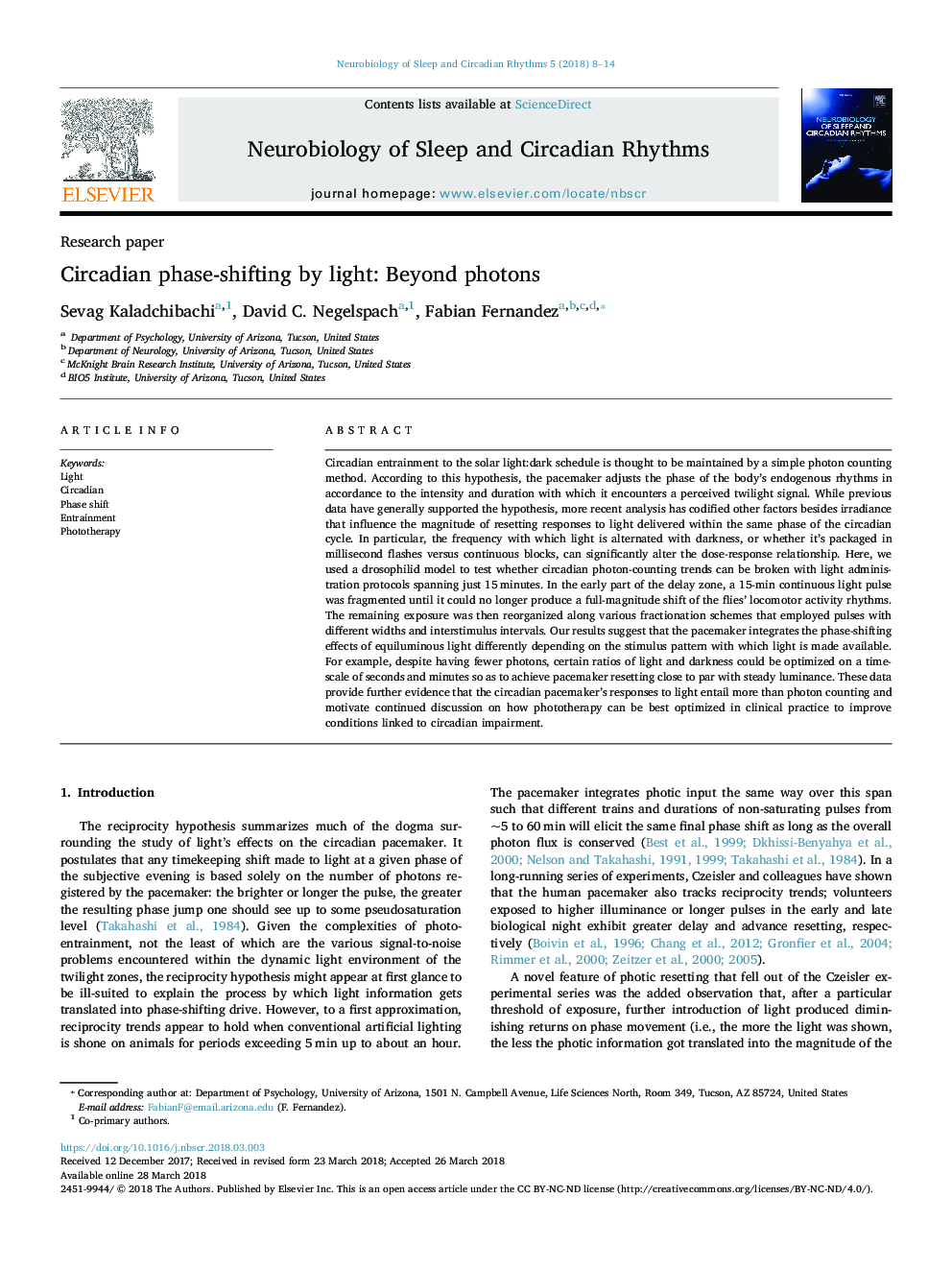| کد مقاله | کد نشریه | سال انتشار | مقاله انگلیسی | نسخه تمام متن |
|---|---|---|---|---|
| 8838694 | 1613184 | 2018 | 7 صفحه PDF | دانلود رایگان |
عنوان انگلیسی مقاله ISI
Circadian phase-shifting by light: Beyond photons
ترجمه فارسی عنوان
فاز سی دیادی که نور را تغییر می دهد: فراتر از فوتون
دانلود مقاله + سفارش ترجمه
دانلود مقاله ISI انگلیسی
رایگان برای ایرانیان
کلمات کلیدی
سبک، دوران کودکی، تغییر فاز، جذب، فتوتراپی،
موضوعات مرتبط
علوم زیستی و بیوفناوری
علم عصب شناسی
علوم اعصاب رفتاری
چکیده انگلیسی
Circadian entrainment to the solar light:dark schedule is thought to be maintained by a simple photon counting method. According to this hypothesis, the pacemaker adjusts the phase of the body's endogenous rhythms in accordance to the intensity and duration with which it encounters a perceived twilight signal. While previous data have generally supported the hypothesis, more recent analysis has codified other factors besides irradiance that influence the magnitude of resetting responses to light delivered within the same phase of the circadian cycle. In particular, the frequency with which light is alternated with darkness, or whether it's packaged in millisecond flashes versus continuous blocks, can significantly alter the dose-response relationship. Here, we used a drosophilid model to test whether circadian photon-counting trends can be broken with light administration protocols spanning just 15â¯minutes. In the early part of the delay zone, a 15-min continuous light pulse was fragmented until it could no longer produce a full-magnitude shift of the flies' locomotor activity rhythms. The remaining exposure was then reorganized along various fractionation schemes that employed pulses with different widths and interstimulus intervals. Our results suggest that the pacemaker integrates the phase-shifting effects of equiluminous light differently depending on the stimulus pattern with which light is made available. For example, despite having fewer photons, certain ratios of light and darkness could be optimized on a timescale of seconds and minutes so as to achieve pacemaker resetting close to par with steady luminance. These data provide further evidence that the circadian pacemaker's responses to light entail more than photon counting and motivate continued discussion on how phototherapy can be best optimized in clinical practice to improve conditions linked to circadian impairment.
ناشر
Database: Elsevier - ScienceDirect (ساینس دایرکت)
Journal: Neurobiology of Sleep and Circadian Rhythms - Volume 5, June 2018, Pages 8-14
Journal: Neurobiology of Sleep and Circadian Rhythms - Volume 5, June 2018, Pages 8-14
نویسندگان
Sevag Kaladchibachi, David C. Negelspach, Fabian Fernandez,
